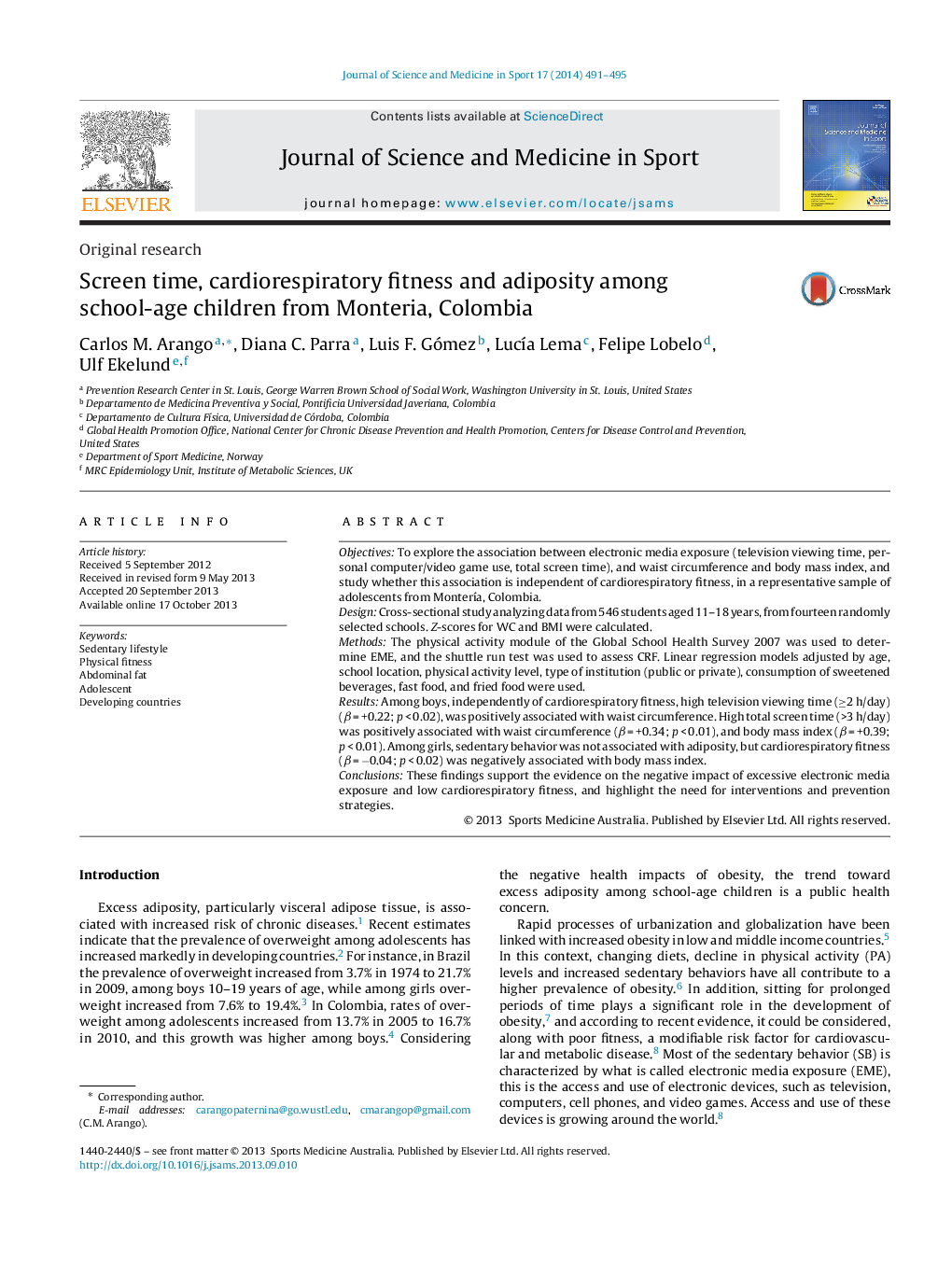| Article ID | Journal | Published Year | Pages | File Type |
|---|---|---|---|---|
| 2704454 | Journal of Science and Medicine in Sport | 2014 | 5 Pages |
ObjectivesTo explore the association between electronic media exposure (television viewing time, personal computer/video game use, total screen time), and waist circumference and body mass index, and study whether this association is independent of cardiorespiratory fitness, in a representative sample of adolescents from Montería, Colombia.DesignCross-sectional study analyzing data from 546 students aged 11–18 years, from fourteen randomly selected schools. Z-scores for WC and BMI were calculated.MethodsThe physical activity module of the Global School Health Survey 2007 was used to determine EME, and the shuttle run test was used to assess CRF. Linear regression models adjusted by age, school location, physical activity level, type of institution (public or private), consumption of sweetened beverages, fast food, and fried food were used.ResultsAmong boys, independently of cardiorespiratory fitness, high television viewing time (≥2 h/day) (β = +0.22; p < 0.02), was positively associated with waist circumference. High total screen time (>3 h/day) was positively associated with waist circumference (β = +0.34; p < 0.01), and body mass index (β = +0.39; p < 0.01). Among girls, sedentary behavior was not associated with adiposity, but cardiorespiratory fitness (β = −0.04; p < 0.02) was negatively associated with body mass index.ConclusionsThese findings support the evidence on the negative impact of excessive electronic media exposure and low cardiorespiratory fitness, and highlight the need for interventions and prevention strategies.
